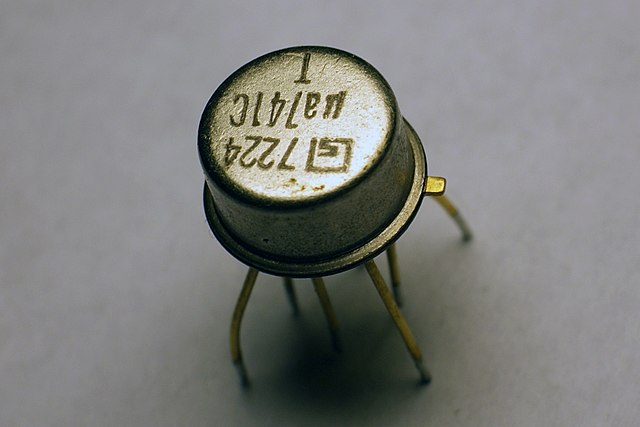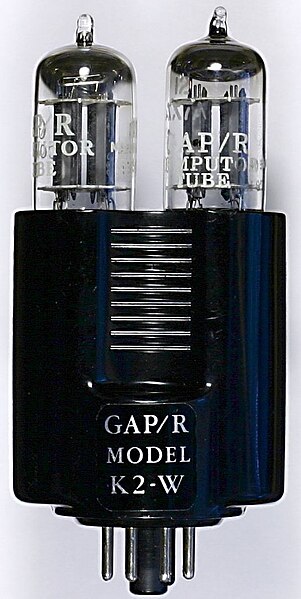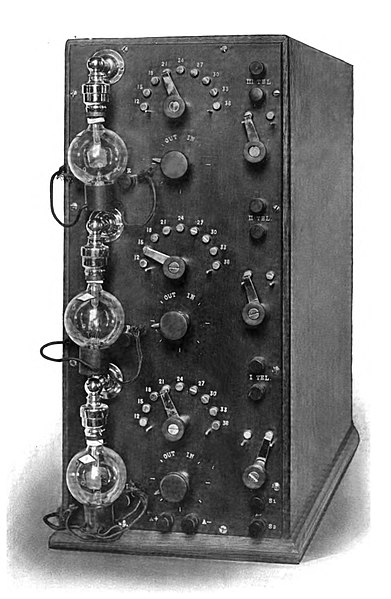An operational amplifier is a DC-coupled electronic voltage amplifier with a differential input, a (usually) single-ended output, and an extremely high gain. Its name comes from its original use of performing mathematical operations in analog computers.
The μA741, a popular early integrated op amp
GAP/R K2-W: a vacuum-tube op amp (1953)
LH0033CG: a high speed hybrid IC op amp
An op amp in a mini DIP package
An amplifier, electronic amplifier or (informally) amp is an electronic device that can increase the magnitude of a signal. It is a two-port electronic circuit that uses electric power from a power supply to increase the amplitude of a signal applied to its input terminals, producing a proportionally greater amplitude signal at its output. The amount of amplification provided by an amplifier is measured by its gain: the ratio of output voltage, current, or power to input. An amplifier is defined as a circuit that has a power gain greater than one.
A McIntosh stereo audio amplifier with output power of 50 watts per channel used in home component audio systems in the 1970s.
De Forest's prototype audio amplifier of 1914. The Audion (triode) vacuum tube had a voltage gain of about 5, providing a total gain of approximately 125 for this three-stage amplifier.
Power amplifier by Skyworks Solutions in a Smartphone.
An LM741 general purpose op-amp







